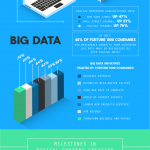Why Innovation And Imitation Aren’t Mutually Exclusive
When it comes to theft, one social network’s rap sheet is a mile long. There’s the cloudy origin story, involving who allegedly stole what from those charming Winklevoss twins. Then there’s the fact that the network’s Like button was featured earlier on a site called FriendFeed. Later, when one-on-one messaging apps started taking off, Facebook conveniently rolled out Messenger as a smartphone app. And just as YouTube video exploded, the the company ramped up its own native video platform, which now gets well over 8 billion views a day. Facebook’s latest heist, if you choose to see it that way, is its property Instagram’s imitation of Snapchat’s Stories, which lets users share photos and short videos that expire after 24 hours.
Underhanded? Unethical? Reprehensible? Nope. If you ask me, it’s brilliant—even innovative. Here’s why.
The Art Of The Copycat
Like countless innovators before it, Facebook has repeatedly swallowed up competitors’ features and made them bigger, better, and more accessible to a larger audience. And in the end, it’s more than just Facebook that benefits. Often (though not always), it’s ordinary users and even the business that got ripped off in the first place that win out. When done right, imitation represents a powerful, yet widely misunderstood business stratagem.
The history of human expression—from art and music to literature and dance—is built on the creative adaptation of what came before, and the internet follows this pattern; it’s nothing if not the result of distributed innovation and development. The open-source golden age may now be behind us, but a key reason technology has sped ahead so quickly is because of that web-based culture of imitation that once thrived out in the open.
From the perspective of the company doing the copying, the reduced development costs are one enticement. But equally important is the assurance of product-market fit. Facebook knows, for instance, that Instagram Stories is a viable product because Snapchat has already gone to the enormous trouble of proving an appetite exists for day-long, disappearing photo collages.
This isn’t unique to Facebook; the business case for “cheap and low-risk” pretty much makes itself. In our early days here at Hootsuite, we looked at the traction URL shorteners like bit.ly were getting and decided to put a variation of them into our product. It helped us get users at a critical time and it was a surefire bet.
How Users Benefit From Imitators
But in the process of jumping on a bandwagon—or running away with it—the best imitators invariably put their own twist on the original idea. And something as simple as broadening a concept’s reach can prove innovative all by itself. Take the Stories concept: Snapchat has around 100 million daily users and counting, a user base that tilts demographically young. Instagram, by contrast, has 300 million daily users from a much broader cross-section of the population.
But through subtle design tweaks, as one Co.Design contributor pointed out, Facebook has democratized the Stories technology, making it far more intuitive and easy to use than Snapchat’s interface. Gone are the mysterious swipes, replaced with clearly labeled buttons. And unlike on Snapchat, you can instantly tap into a network of people to share with. In “ripping off” Snapchat, Facebook has made the format better and more useful to more people.
When more users gain access to more features, refinement, and value at a lower price, that’s innovation in action. Having a monopoly on technology might benefit the company that holds the strings, but distributed access makes a lot more sense for the rest of us—the people all those companies are competing to serve.
A Victimless Crime?
But who loses out? Obviously, the company that did all the hard work of coming up with an original idea and bringing it to market isn’t such a clear winner. Having been on the receiving end of this, I’ll admit that it hurts. Hootsuite was the among the first to develop scheduling technology for social media, enabling posts to be drafted in advance and published days or weeks ahead. Almost immediately, that feature was copied by our competitors.
So in the immediate term, months of engineering work meant to give us an edge was swiftly wiped out. But in arguably more important ways, our copycats helped us—for one thing, by creating a larger pool of potential customers—and it’s a fair bet Instagram teaching hundreds of millions more people to “snap” may wind up helping Snapchat, too.
That’s because, especially in nascent sectors where technology is new and there’s not a ready audience yet, the act of copying can be critical to building a category. In effect, your imitators are helping build awareness and creating an industry. You’ll still need to compete with them, of course, but generating a new market from scratch may not be something you can pull off all by yourself.
There’s another upside for victims, too: Urgency. The reality that your best ideas will soon be copied by competitors makes it impossible to rest on your laurels. Instead of getting complacent about your position, you’re forced to get better—again and again. Goaded on by the copycats, a good business has the potential to become a great one, to innovate further and faster than ever anticipated.
To be sure, there are limits and drawbacks to all this imitation. Legally speaking, some lines should clearly never be crossed, so it’s always crucial to consult with your lawyer or in-house staff if there’s ever any question about legalities. Imitation is one thing, but violating patent laws and existing regulations is a real risk to avoid at all costs. If your company is uncertain, then the first step is getting an expert opinion.
It’s also true that taken too far, ruthless copying can disincentivize creativity. Why pour money and energy into a new product that your competitor is going to steal the moment you unveil it? Companies that get hooked on stealing can inadvertently sap their own ability to come up with new ideas.
In the end, though, the only real hedge against all innovative thievery is the one thing that can’t be copied: raw, relentless creativity. Or, as Rudyard Kipling put it best:
They copied all they could follow, but they couldn’t copy my mind,
And I left ’em sweating and stealing a year and a half behind.
Fast Company , Read Full Story
(8)













